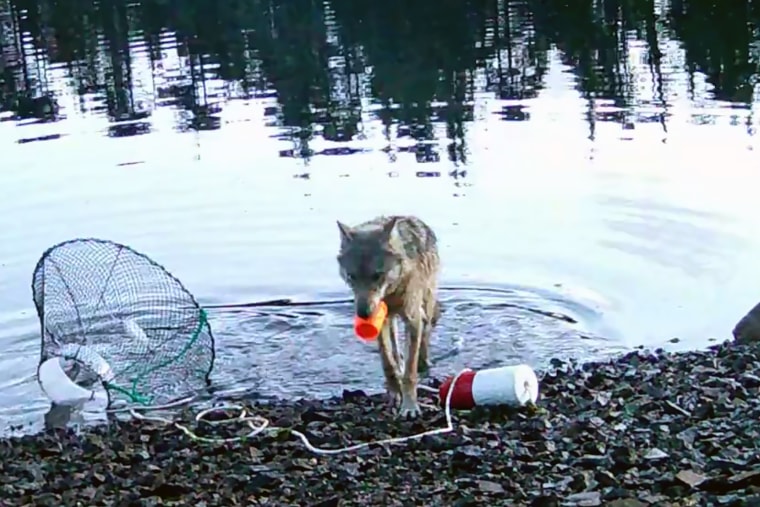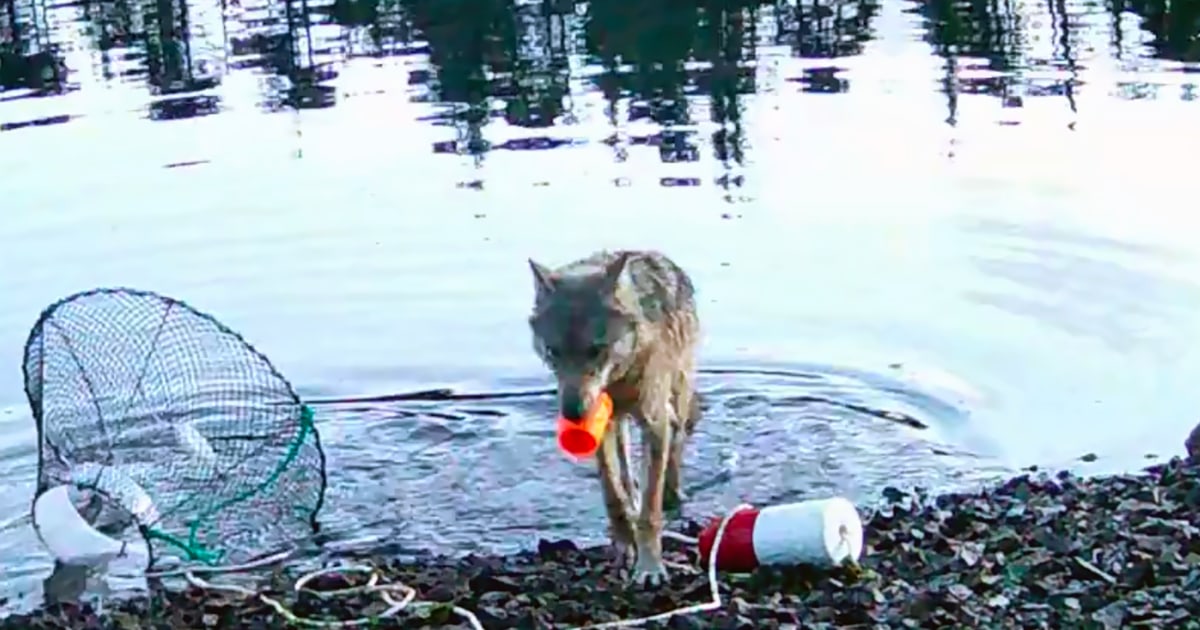It is a case of wolves in fishermen’s clothing as several of them have been spotted pulling crab traps from waters off Canada’s west coast in what scientists say may be the first documented case of the animals using a tool.
Members of the Heiltsuk Nation, an Indigenous government in the province of British Columbia, had placed the traps to capture invasive green crabs that destroy eelgrass habitats which support marine life and decimate the clam, herring and salmon populations the tribe depends on for food.
But on their return, they found some of them had been shredded to pieces, according to a study published Monday in the journal Ecology and Evolution.
The finger of blame was initially pointed at both bears and wolves, although some suspected marine mammals might have been behind the damage because the traps were submerged in deep water near the community of Bella Bella at all times.
A team of researchers led by Kyle Artelle, a professor at the SUNY College of Environmental Science and Forestry in Syracuse, New York, and Paul Paquet, an adjunct professor at Canada’s University of Victoria, set out to solve the mystery.
Within a day, they caught their culprit after installing remote, movement-triggered cameras overlooking the water.
A video showed a female wolf diving into the water to grab a fishing float, carrying it to the beach and repeatedly tugging on the attached rope until the trap surfaced. She then tore it apart to eat the fish inside.
“This sequence appears to demonstrate a sophisticated understanding of the multi-step connection between the floating buoy and the bait within the out-of-sight trap,” the study’s authors wrote.
While domestic animals, including dogs, have been previously observed using tools to their advantage, this is the first recorded case of such behavior in wild canids which include wolves, coyotes, jackals and foxes.
Whether the trap-pulling behavior counts as conscious “tool use” remains a matter of scientific debate.
Tool use involves understanding how to connect a tool, like a rope, to a desired outcome, such as a trap, Benjamin Beck, a comparative psychologist specializing in animal cognition and biodiversity conservation, told NBC News in an email Tuesday.
While he acknowledged the wolf’s behavior was “a significant demonstration of cognitive complexity,” Beck said “string-pulling is not tool use because the user (in this case the wolf) was not responsible for tying the rope to the trap.”
Beck, who has authored many scientific papers and books, including 1980’s “Animal Tool Behavior,” said that establishing that connection between the rope and the trap required more intellectual ability “than simply exploiting a pre-existing connection.”
 New filmed research shows a wolf pulling a rope to get food.K.A. Partelle and P.C. Paquet, Ecology and Evolution, 2025
New filmed research shows a wolf pulling a rope to get food.K.A. Partelle and P.C. Paquet, Ecology and Evolution, 2025
The authors themselves have also acknowledged that alternative explanations, such as simple trial-and-error learning, could account for the wild wolves’ behavior.
However, when animals perform “multi-step behaviors repeatedly and efficiently,” even the simplest explanation for their actions may involve at least some “causal understanding” on their part, they wrote, adding that this “would be assumed for a human in similar circumstances.”
Christina Hansen, an assistant professor in animal behavior at Linköping University in Sweden, agreed that she would classify the actions as “string pulling.”
Such behavior has been documented before in captive wolf populations, where animals cooperated in a string-pulling task for a reward, she said, adding that it would be interesting to see whether the behavior spread in the wild wolf population “by social learning.”
“That is, if other wolves pick up this behavior from the wolf that started pulling in the traps,” Hansen said.
Regardless of the extent to which the wolf truly understood the trap’s mechanics, the very act of appropriating human tools to achieve a goal is what the authors said was “noteworthy.”
They also stressed that a on negative perception of wolves could now challenged by findings on their intelligence.
“I personally do not believe that intelligence, especially as we humans conceive it, should be a criterion for respect and conservation of wildlife,” Beck said. “But cases like this are dramatic reminders of the wonders and connectedness of our natural world.”

